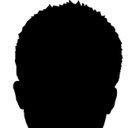[Observational study of complications connected with the use of the laryngeal mask airway and sevoflurane anesthesia in children].
Palavras-chave
Resumo
OBJECTIVE
To comparison of the type and the incidence of complications connected with the use of the Laryngeal Mask Airway (LMA) and sevoflurane anesthesia in different ages children.
METHODS
160 ASA I or II children aged 1-10 yrs body mass index (BMI)14-21 undergoing inguinal hernia repair operation were divided into 4 groups according to their ages, 7 m-1 yrs in group A, 1-3 yrs in group B, 4-6 yrs in group C and 7-10 yrs in group D. General anesthesia was induced with sevoflurane and nitrous oxide in (N2O) via a pediatric circle system. No premedication were given. Insertion conditions were noted as satisfactory (jaw relaxed, lash reflex disappeared, no coughing, gagging, swallowing). LMA were placed using the reverse technique, then ilioinguinal/iliohypogastric nerve blocks were performed. No neuromuscular blocking drugs were used and spontaneous breathing was permitted. LMA were removed after the end of operation, then the patient were sent to post-anaesthesia care unit (PACU). The time of operation and awakening, vital signs and Aldrete scale were recorded. The incidence of adverse effects(coughing, gross movement, laryngospasm, agitation, nausea, vomiting, sore-throat, respiratory depression, glossoptosis, breathholding and hypercapnia)were also noted.
RESULTS
There was no significantly difference in four groups about sex, BMI, operation time, the time of awakening and Aldrete score (P > 0.05) . The incidence of hyoxemia, glossoptosis, nausea, vomiting and cough were no significantly difference in four groups, but the incidence of hypercapnia was higher in group A than in other three groups. The incidence of agitation in group C were significantly higher than in group A and group B. The incidence of breathholding was higher in group A and group D than in group B and group C.
CONCLUSIONS
The age can influence complications connected with the use of the LMA and sevoflurane anesthesia in children. Respiratory complications is easy to occurred in children less than 1 years. Agitation is especially frequent in children 4-6 years.


